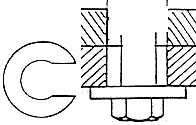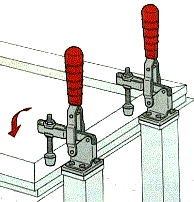SMED
|

|
Last update: January 16th, 2011 - Part 1 -
Part 2
|
SMED, how to?Like other participative approaches, SMED requires the involvement of everyone concerned. Especially operators who have the intimate knowledge of their process, of the machine and of their job. They know the weak spots, developed their own "good practices" and are the key to the future man-machine performance. After SMED rollout, they must comply to new rules and will accept them easier as they helped their definition. Collect dataTo improve a situation it is mandatory to have a keen knowledge about the "actual state", especially through measurements and observation. Therefor:
If the 5S are not yet fully deployed or not even known, the analysis of collected data will show the need for (further) 5S actions, in order to make tools and equipment handy, as well as a new workshop layout to avoid or minimize all useless motions. If the changeover itself isn't standardized in a formal document, it is likely to see many variations of operations according to the persons. It is absolutely necessary to fix one standard (no matter if it isn't the best practice at this stage) in order to reduce the variability and make all measurements according to a single procedure. Besides, procedure and operation manual will avoid mistakes and the need for controls, further trimmings and so on. Convert setupsIn this step, it is important to distinguish what must absolutely be done while machine is stopped (internal setup), from what can be done while machine is runing, meaning even BEFORE changeover occurs (external setup). What is actually done machine stopped, can it be done in advance, while still processing? Can we convert internal setup into external? Some external operations are actually done like internal because of old habits or simply by ignoring this conversion principle. They are to be converted immediately.
Conversion examples:Simplification of fittings and tighteningsOn every screw, regardless to its length, it is always the last turn which tightens. Converserly the first turn is the on which releases. Aware of this, the challenge is about finding a possible tightening with a single turn. There are also tightening solutions without screwsn nuts and bolts which are often preferable. The trouble with screws, bolts and nuts is they come in various shapes and size, requiring various tools. They alos keep falling into the worst possible place, sometimes causing breakdowns. 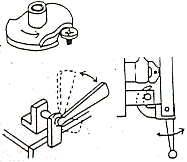
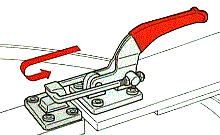

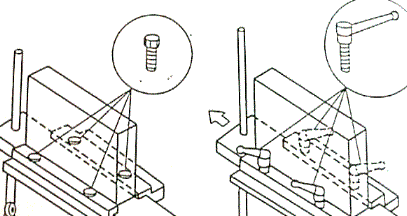 magnify Suppress the need for toolsAs is can be noticed in the examples above, some tightening solutions do not even require hand tools. This is also of great interest, as searching for tools is one of the typical wastes.
|
Back to part 2 The author, Chris HOHMANN, is partner
in an international consultancy firm. He advises and trains about industrial and logistics performance.
|
This page was brought to you by ©hris HOHMANN - http://chohmann.free.fr/
| |||||||||||||||||||||||||


